
- Jump to Update #2
Update #1
Date: January 20, 2021
ODO: 1530
Km driven: n/a
Fuel consumption: 6.0L/100km
The new Toyota Yaris has grown up and spawned children, with ‘Yaris’ now encompassing a family of vehicles which the Japanese manufacturer insists has something for everyone.
Whether you go for the normal Toyota Yaris hatchback, step up to the adventurous Toyota Yaris Cross small SUV or are after outright lap times with the GR Yaris hot hatch, Toyota’s new advertising line suggests “small now has it all”.
I’ll be putting that claim to the test over the next three months. I will start off with a base specification Toyota Yaris Ascent Sport manual to determine whether the Yaris still represents a good first car purchase, especially considering Toyota bumped the price of some new-gen Yaris variants by as much as a third over their predecessor, but more on that later.
After the entry-level Yaris Ascent, I’ll move to the range-topping Yaris Cross Urban AWD to see how well that model performs as an urban SUV, before spending some time in the high-performance GR Yaris hot hatch.
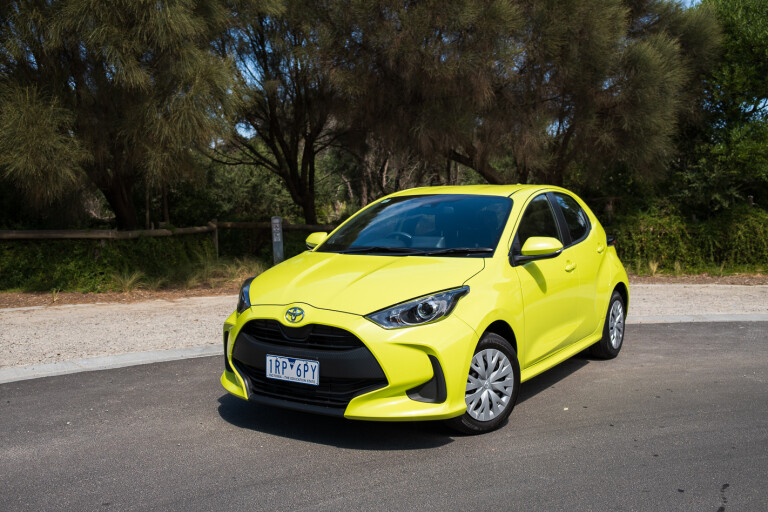
For now, allow me to introduce the $22,130 (before on-road costs) Yaris Ascent Sport manual.
Disregarding the eye-catching $500 Electric Green paint scheme reminiscent of a promo-car, our Yaris is as barebones as they come, featuring the non-hybrid 1.5-litre engine attached to a six-speed manual gearbox.
On its release in late 2020, the current Yaris generated much criticism for its rise in price.
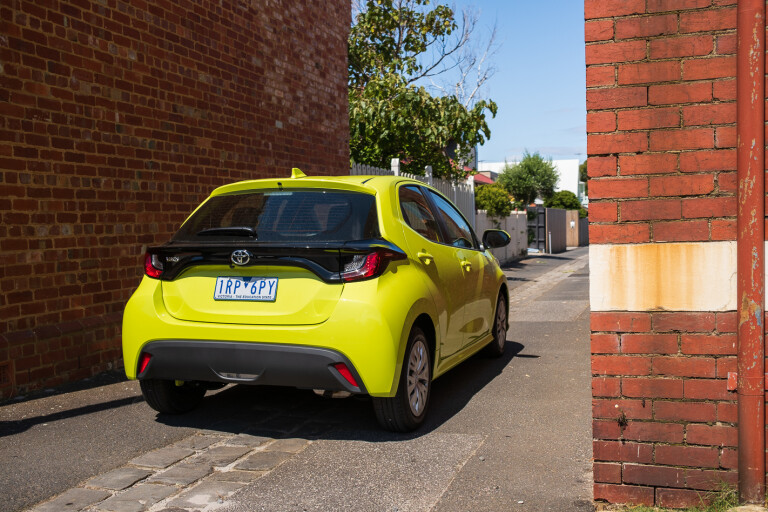
The small car was traditionally a go-to for young Australians, sporting a sub-$20k price with enough tech and safety to keep mum and dad happy.
This time around, Toyota has priced the Yaris from $22,130 up to a Corolla-touching $32,100 for the range-topping Yaris ZR Hybrid.
Toyota’s website lists our Yaris as $26,431 driveaway. There’s no singular reason for the considerable price hike (the Yaris Ascent Sport's list price is now $6740 more expensive than its predecessor), with Toyota insisting this is what it costs to bring this type of car to market in Australia these days.
Toyota also points out the relatively high level of standard passive and active safety equipment, including adaptive cruise control, front-centre airbags, lane-keep assist, autonomous emergency braking (AEB) and a driver-assist system that can automatically detect and brake to avoid pedestrians and cars at intersections.
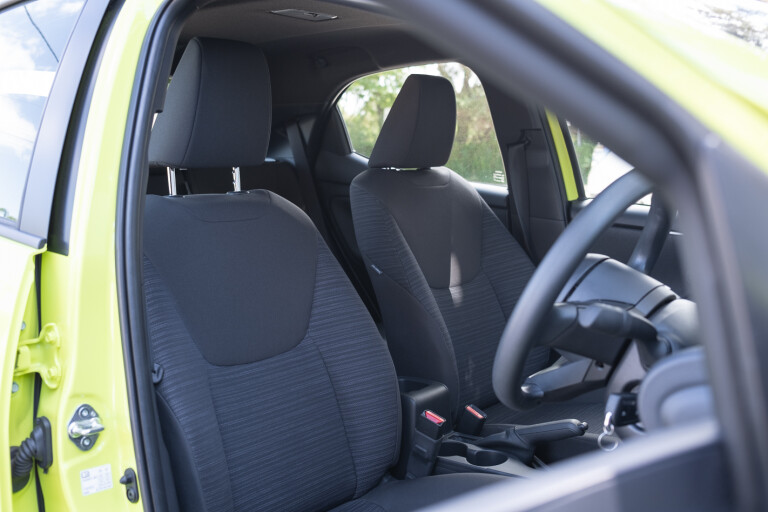
That's a higher level of standard kit than a rival Volkswagen Polo, equipped with six airbags and rather than eight in the Yaris, and can only boast AEB as standard from the Toyota's list. The Mazda 2 gets closer, packing blind-spot monitoring, rear-cross traffic alert, lane-keep assist and AEB as standard.
However, both the VW Polo ($19,290) and Mazda 2 ($20,990) are more affordable.
But few other goodies are included on the inside to explain the small hatchback’s price rise. There’s a 7.0-inch infotainment screen with Apple CarPlay and Android Auto smartphone integration, digital radio, one-touch power windows, auto headlights with LED daytime running lamps and comfortable-but-drab black cloth upholstery.
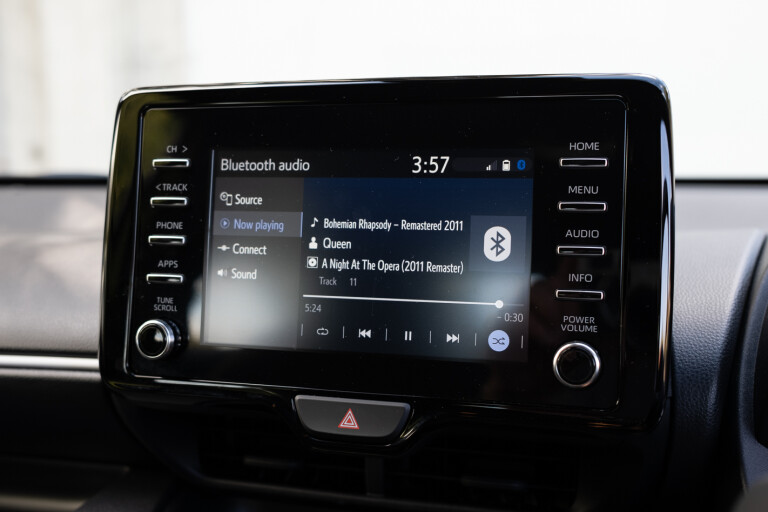
The Ascent Sport spec is solely powered by a new 1.5-litre naturally-aspirated three-cylinder engine producing 88kW and 145Nm. Toyota says the six-speed manual car returns a 5.4L/100km consumption, though I’ve been seeing 6.0L/100km so far in mixed driving.
Its 40-litre fuel tank is pretty cheap to refuel though, and the range indicator suggests nearly 600km between fill-ups.
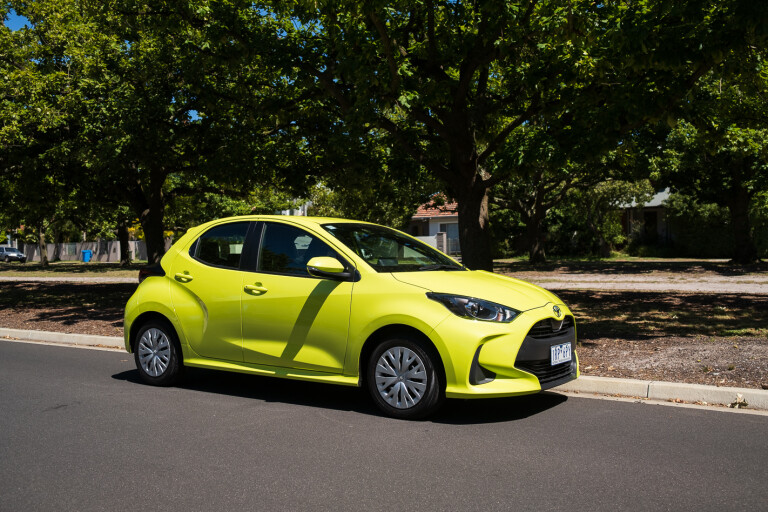
I’ve not ventured too far with the Yaris just yet, but it is immediately apparent that its small stature shines around town. It’s joyously simple to reverse park into tight spots because it is less than 4m long and has a high-definition reversing camera. The feather-light steering is direct and responsive for suburban duties.
I can level no complaints at the Yaris’s suspension tune thus far, with the small car remaining composed over big speed humps and rolling over potholes without a fuss. It tends to jitter over some of the minor imperfections in Melbourne’s roads, though I’m keen to take it further afield to investigate further.
While frugal, the powertrain isn’t especially inspiring to rev out and the manual shift isn’t the most forgiving to execute. The bite point is right at top of the clutch’s travel making it hard to time the perfect take-off.
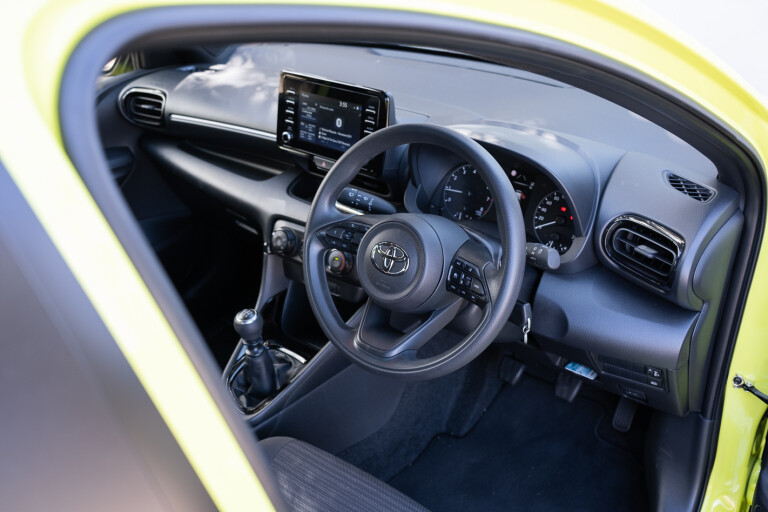
The cabin mightn’t have too many bells and whistles, but it’s proving a functional and comfortable place to spend time. There are a number of neat storage spots around the shifter for phones, keys and wallets, while the door bins are large enough for big water bottles and other loose items.
However, there is no centre console bin to hide valuables once you leave the car.
The sound system is perfectly enjoyable for a small car, though the Bluetooth annoyingly does take some time to reconnect upon re-entry.

I've even given the 270-litre boot a quick workout by fitting in a few appliances. It's not as commodious as some rivals (a VW Polo has 351 litres and the Kia Rio has 325 litres) but the seats can fold mostly flat in a 60:40 fashion and the handy false floor can make loading in heavier items easier.
So far it’s stacking up as a nice entry-level small car, though whether it truly justifies its $26K-plus price remains to be seen.
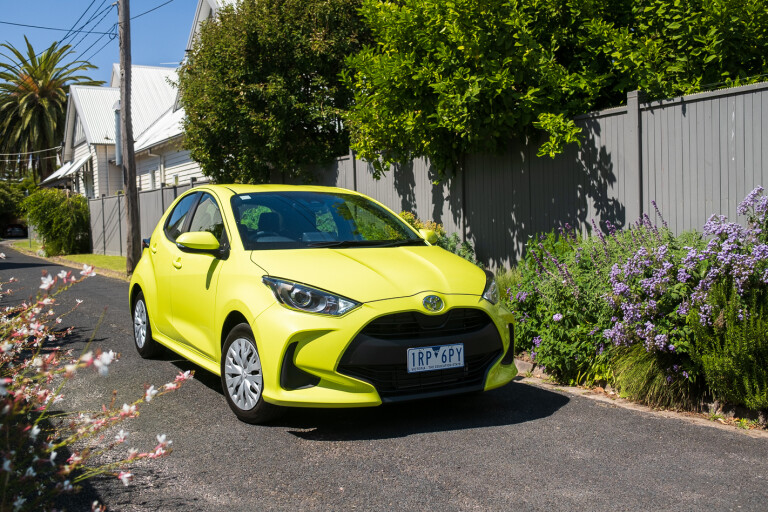
I’ll have driven the Yaris further in the next update to speak on the powertrain, and I’m also looking to get some seat time in the second row to see how back-seat passengers fare.
Update #2
Date: February 16, 2021
ODO: 2301
Km driven: 771
Fuel consumption: 6.0L/100km
Life with the highlighter yellow Toyota Yaris Ascent Sport is proving that you don't actually need a supercar to attract attention as this little tacker turns heads all over the place.
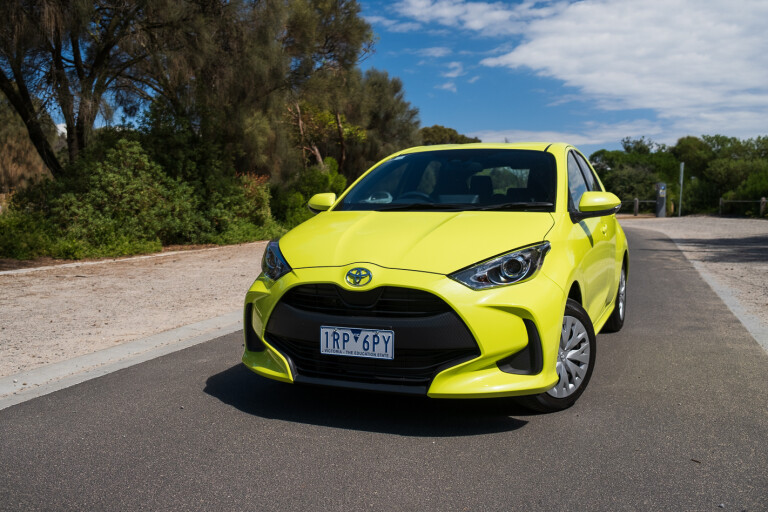
Whether that's a good or bad thing is up to the individual, but it's cool to see Toyota continuing with the tradition of offering wildcard colours on the Yaris.
Where it did stand out from the crowd was on a recent trip down to the Mornington Peninsula, thumbing its nose at a brace of German-rainbow SUVs. I was already impressed with the way the Yaris handles about-town duties, but it was time to see whether the Yaris could be more than a one-trick pony.
Blasting onto the freeway headed south, it's clear that there's not a lot of fight in the standard non-hybrid 88kW/145Nm 1.5-litre naturally-aspirated three-cylinder engine. At least you can make the most of the available power by shifting yourself with the six-speed manual (as opposed to the optional continuously variable transmission), but this little car is clearly better suited to inner-city duties than overtaking on the highway.
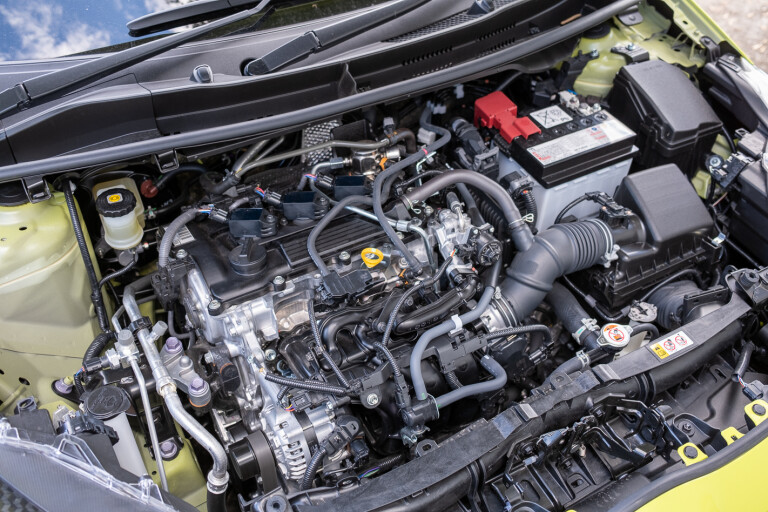
Though there is the option of a hybridised powertrain, when rivals like the Volkswagen Polo stock turbocharged engines as standard, it can make the Yaris feel a little old hat.
Wringing the engine out to extract more power on the freeway doesn't help noise, vibration and harshness levels either. Engine, wind and road noise is intrusive at these kinds of speeds, and it even sways with the wind a fair bit on a blustery day.
Deciding that the freeway is best suited to larger cars, I took an early exit to see how the Yaris fared through some back roads.
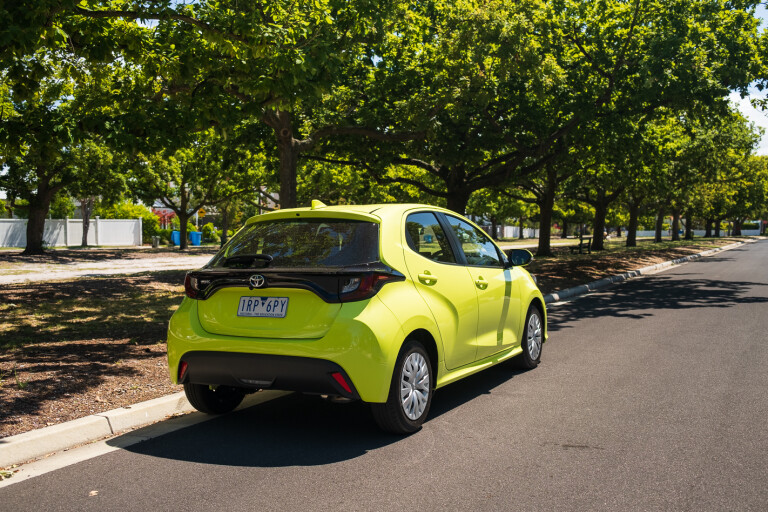
While no one would consider it a hot hatch, I did enjoy cornering through the twisty parts of Balnarring on the way to the peninsula. Any car with a manual transmission is arguably more fun than an automatic alternative.
The Yaris remains well composed over smaller road imperfections and can even dispatch large bumps without much fuss. It did tend to skip over mid-corner bumps that can throw the Yaris's course off-line, though its small-statured body is entertaining to zip around tighter bends.
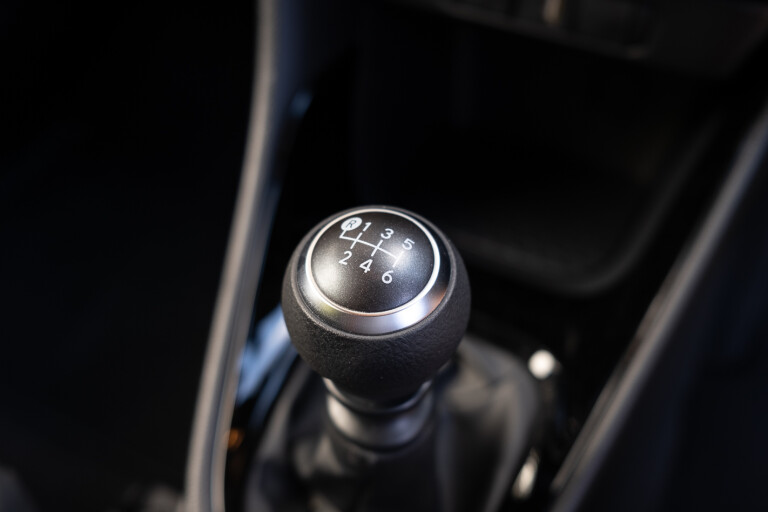
As long as you're happy constantly shifting through the gears on these types of roads in order to extract the maximum amount of power and torque, it's a fun car to drive. But having to constantly change down gears to climb hills does wear thin.

A pit stop in Flinders gave me a chance to give the back seat a test run after I had reservations in the first update. It is a bit of pain to step inside the second row due to the door shape, but once inside it is fairly comfortable – a fine place for short trips. You could only ever fit two adults in the rear – despite the belted middle pew – and there's not much in the way of amenities (no vents, minimal storage).

On the whole, the seats are pretty comfortable and look built to withstand the test of time with strong fabric. Materials used on the dash top and door cards are, as you'd expect, unremarkable black plastic.
One thing common to all new Yaris model variants is a fabric-covered portion of the door cards that marks extremely easily with fingerprints and scuffs. It looks horrible once marred, so best stay away if you like your car to remain in good nick visually.
It's a shame that while prices have risen across the board – largely due to standard safety additions, Toyota says – the Yaris soldiers on with hard-wearing plastics and misses out on new features like wireless smartphone integration and charging, ambient lighting and a digital dash cluster. They don't even paint the underside of the bonnet.

While it's commendable that safety enhancements are at the forefront of Toyota's product development, it would be nice to see improvements in other areas as well.
For now, the Yaris is still a safe, entertaining and perfectly usable car for first-time drivers in the urban setting. Though, undoubtedly, the increased prices will mean we see fewer of them on Australian roads.

Toyota has switched out my next booking, which means I'm jumping into the GR Yaris hot hatch next and having a go in the Yaris Cross SUV after that.
Stay tuned for the next update as I detail what it's like to live with one of the most-hyped releases of recent years.

COMMENTS